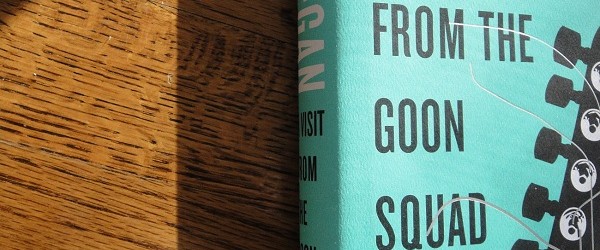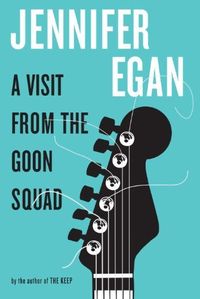
A Look At Pulitzer Winner “A Visit From The Goon Squad.”
Books, ReviewsThe greater the clarity of sound, the superior it is, is a notion that is taken as gospel truth. So is the one that progress in acoustics is the ability to record and reproduce sound, which is free of distortions, is more distinct, taut, and precise.
In the pecking order of audio-storage gadgets, the lineup, in descending order of standing is thus: The various desktop and mobile apps, the compact disc, the cassette, the eight-track cartridge, the vinyl record, and the phonograph cylinder.
Standing where we are today, one can only envision the future of musical sound to be further crystalline, with shining, chiseled edges. The faintest hint that the electronic embellishments from popular music would be sieved off will likely cease to make it popular.
But, hold on.
Jennifer Egan’s Pulitzer Prize-winning novel “A Visit From The Goon Squad,” impels one to rethink that view.
 Around the time that futurists have forecast the emergence of an inter-planetary Internet, a manned mission to Mars, a geo-engineered climate reversal, analog musicians, with their Colosseum-size orgy of mixing consoles, will make a comeback. Belting out digitally unadulterated old favorites will be vogue again. Everything old will be new again. There will be a return to the innocence of the wobbly percussion of a bongo, of a vocalist singing solo, with nothing but just a slide guitar.
Around the time that futurists have forecast the emergence of an inter-planetary Internet, a manned mission to Mars, a geo-engineered climate reversal, analog musicians, with their Colosseum-size orgy of mixing consoles, will make a comeback. Belting out digitally unadulterated old favorites will be vogue again. Everything old will be new again. There will be a return to the innocence of the wobbly percussion of a bongo, of a vocalist singing solo, with nothing but just a slide guitar.
Egan’s book does not belong to the sci-fi shelf. Yet, one gets a peek into the future of the rock music industry (as well as slices of its present and recent past) through the interstices of the lives of its many characters.
The fates of musicians will be decided by a new demographic, the toddlers, or “pointers,” so named possibly because of their habit of “pointing” at devices and getting myriad tasks accomplished.
It will be a cleaner world. Tattoos, body piercings, four-letter words, and drugs, will have met their demise. Everyone, without an exception, will be wired and be carrying a “handset,” a multi-purpose mobile device akin to the types we see on the market today, but degrees more versatile. Employees will work without paper and desks.
People will communicate 24/7 via “Ts,” an infernal brand of texting that omits vowels entirely. The art of writing will have undergone an almost unrecognizable change. Narratives will be pared down textually and will be laid out as visually tantalizing infographics. It is here that Egan, an ace literary experimenter, makes a literary PowerPoint presentation to her readers.
Plotted as a social graph, the novel’s two nodes would be Bennie Salazar, a rock musician-turned-record label exec, and his assistant Sasha, and to which all other lives are linked. Like gaseous molecules in motion in an enclosed chamber, they intersect with theirs, interface with theirs, and fork out, only to cross paths at a later time. Most, if not all, of these characters are defined by their peculiarities that range from an innocuous, if eyebrow-knitting idiosyncrasy, to a serious criminal transgression.
Sasha has been a kleptomaniac since her teens. Bennie is in the habit of spraying insecticide under his armpits, and drinking coffee sprinkled with gold flakes. La Doll, the publicist for whom his first wife, Stephanie, works, has a darkly comic public relations disaster of her own, when a design flaw in a hip lighting fixture she conceived, scalded the heads of celebrity guests she’d assembled at a New Year’s Eve party. Left penniless and socially and professionally ostracized after a jail sentence, she takes up a gig of repairing the image of a genocidal leader of an undisclosed nationality.
Stephanie’s brother, Jules, is a celebrity reporter, who pounces on a naïve actress in the middle of an interview. The ailing lead guitarist of a once heavy hitter band wishes to be forever etched in the hearts of his fans by undertaking a concert that’ll kill him.
The book doesn’t have a single, broad plot, but a string of mini-yarns, which like the multiple pockets of a carpenter pant, are autonomous, yet part of the body of the same fabric. A solid good read, enough to induce one to muse upon its subtext, days after one has clicked the book off.
























[…] ZOUCH, January 30, 2012. […]